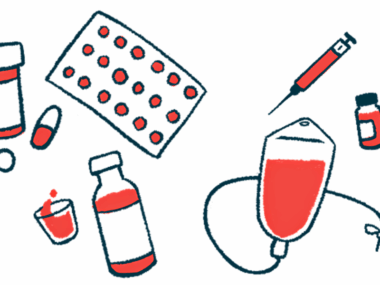Neurodynamic Therapy Found to Reduce Pain, Improve Dexterity in Trial
Written by |

The addition of neurodynamic therapy — a type of manual therapy targeting the nerves — to a standard treatment regimen using several different approaches reduced pain sensitivity and improved dexterity in people with multiple sclerosis (MS), according to data from a clinical trial.
“To the best of our knowledge, this is the first clinical trial to examine the effects of adding neurodynamic mobilizations to a multimodal treatment approach on sensory and motor changes in individuals with MS,” the research team wrote.
This “approach resulted in reduction of pressure sensitivity, greater reduction in pain and improvement in sensitivity to light touch and manual dexterity in MS,” they wrote.
Their study, “Effects of neurodynamic interventions on pain sensitivity and function in patients with multiple sclerosis: a randomized clinical trial,” was published in Physiotherapy.
MS patients commonly experience pain with a wide range of related symptoms, which can hinder quality of life and worsen disability.
While the underlying mechanisms are not fully understood, it has been suggested that pain pathways in the central nervous system (CNS), encompassing the brain and spinal cord, become overly sensitized in MS, leading to feelings of pain.
Manual therapy is a form of physical therapy that uses hands-on techniques to decrease sensitivity to pressure — an indicator of CNS sensitization. This form of therapy previously has been used as a pain management technique in MS.
The clinical trial (NCT03595631), conducted in Spain, sought to investigate whether neurodynamic mobilization, a form of manual therapy that targets the nerves, may reduce pain burden in MS patients.
“While several manual therapy techniques exist for the management of MS, one intervention that has received little attention is neurodynamic mobilization,” the researchers wrote. “It is plausible that neural mobilization could potentially alter the pain experience associated with different conditions including MS since the targeted tissue of this intervention is the nerve trunk.”
Included in the trial were 32 MS patients, including 19 women, with self-reported paresthesia — abnormal sensations — in the arms or hands, who were recruited from a hospital in Madrid in 2018. While half of the patients (mean age 49) served as the control group and received standard care, the other 16 participants (mean age of 50) received neurodynamic treatment.
By MS type, 15 patients had primary progressive MS, 12 had relapsing-remitting MS (RRMS), and five had secondary progressive MS.
Both groups received five sessions of standard care of 30 minutes each, twice per week, consisting of strength exercises, tissue mobilization, and muscle/tendon stretching. Those in the neurodynamic group also were given neurodynamic interventions, involving manual gliding movements targeted at the nerves in the arms and hands — the median, ulnar and radial nerves.
“The aim of a nerve slider intervention is to produce a gliding movement of the nerve trunk in relation to its adjacent tissues,” the researchers wrote.
Increases in pressure pain thresholds (PPTs) — the amount of pressure required for a sensation to turn to pain, measured in kilopascals (kPA) — were overall greater in the neurodynamic group than in the controls after treatment. Differences in the change before and after treatment between the two groups ranged from 89.5 kPA to 186.5 kPA, depending on the arm or hand location.
These increased thresholds indicate a reduced sensitivity to pressure in the neurodynamic group, according to the researchers.
Patients also were asked to rate the pain intensity in their arms and hands, before and after treatment, on a zero to 10 scale. Neurodynamic therapy was associated with greater reductions in pain intensity scores at rest.
Similarly, sensitivity to light touch — measured by pressing small fibers into the skin until they are felt by the patient — decreased after neurodynamic therapy.
Those in the neurodynamic group also showed greater improvements in finger dexterity — measured by how quickly they could perform the nine-hole peg test — after treatment than control patients. On average, the neurodynamic patients were 14.7 seconds faster after treatment, whereas controls improved by seven seconds.
Patients with secondary progressive MS and RRMS who received neurodynamic therapy showed greater dexterity improvements than patients with primary progressive MS who also received the therapy.
No patients reported any adverse events.
Altogether, the findings indicate that neurodynamic therapy improves both pain sensations and associated motor functions.
“Our results would suggest a potential hypoalgesic [decreased pain sensitivity] effect of neurodynamic interventions in patients with MS,” the researchers wrote.
“The current results suggest that inclusion of neurodynamic interventions into a multimodal treatment approach could potentially enhance outcomes in subjects with MS; however, future trials are necessary to continue to examine this,” they added.
The research team noted that the potential mechanisms underlying the positive effects of neurodynamic therapy remain to be explored, but that changes to blood flow in the brain’s pain centers or to the production of the brain’s pain-modifying chemicals could be involved.






